Nissan Altima (L33) 2013-2018 Owners Manual: Rear seat head restraints/headrests
WARNING
● Head restraints/headrests supplement the other vehicle safety systems. They may provide additional protection against injury in certain rear end collisions.
Adjust the head restraints/headrests properly, as specified in this section. Check the adjustment after someone else uses the seat.
Do not attach anything to the head restraint/headrest stalks or remove the head restraint/headrest. Do not use the seat if the head restraint/headrest has been removed. If the head restraint/headrest was removed, reinstall and properly adjust the head restraint/headrest before an occupant uses the seating position. Failure to follow these instructions can reduce the effectiveness of the head restraints/headrests. This may increase the risk of serious injury or death in a collision.
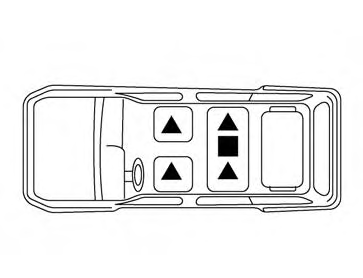
The illustration shows the seating positions equipped with head restraints/headrests. The rear outboard seating positions are adjustable and removable. The center rear position headrest does not adjust and is not removable.
▲ Indicates the seating position is equipped with a head restraint.
■ Indicates the seating position is equipped with a headrest.
+ Indicates the seating position is not equipped with a head restraint or headrest.
● Your vehicle is equipped with a head restraint/headrest that may be integrated, adjustable or non-adjustable.
● Adjustable head restraints/headrests have multiple notches along the stalk to lock them in a desired adjustment position.
● The non-adjustable head restraints/headrests have a single locking notch to secure them to the seat frame.
● Proper Adjustment: – For the adjustable type, align the head restraint/headrest so the center of your ear is approximately level with the center of the head restraint/headrest.
– If your ear position is still higher than the recommended alignment, place the head restraint/headrest at the highest position.
● If the head restraint/headrest has been removed, ensure that it is reinstalled and locked in place before riding in that designated seating position.
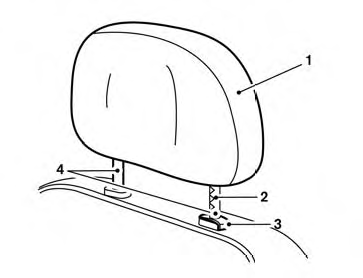
Adjustable head restraint/headrest components
1. Removable head restraint/headrest
2. Multiple notches
3. Lock knob
4. Stalks
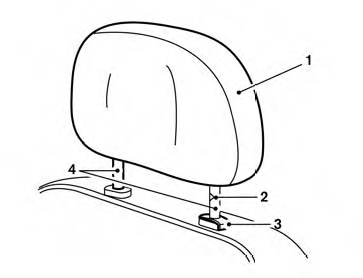
Non-adjustable head restraint/ headrest components
1. Removable head restraint/headrest
2. Single Notch
3. Lock knob
4. Stalks
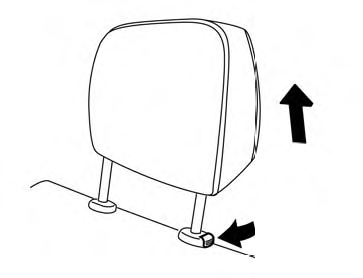
Removal
Use the following procedure to remove the head restraints/headrests.
1. Adjust the seat or seatback as necessary.
2. Push and hold the lock knob.
3. Pull the head restraint/headrest up until it is removed from the seat.
4. Store the head restraint/headrest properly so it is not loose in the vehicle.
5. Reinstall the head restraint/headrest and properly adjust the seat or seatback before an occupant uses the seating position.
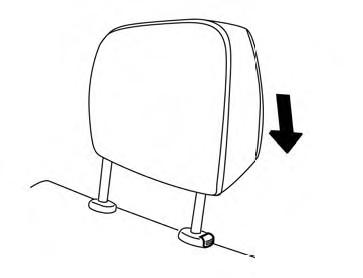
Install
1. Align the head restraint/headrest stalks with the holes in the seat. Make sure the head restraint/headrest is facing the correct direction.
2. Push the head restraint/headrest down until it locks in place.
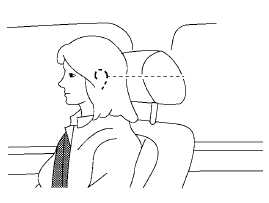
For adjustable head restraint/headrest
Adjust the head restraint/headrest so the center is level with the center of your ears. If your ear position is still higher than the recommended alignment, place the head restraint/headrest at the highest position.
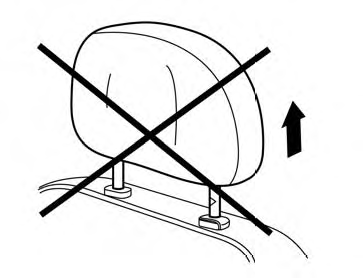
For non-adjustable head restraint/ headrest
Make sure the head restraint/headrest is positioned so the lock knob is engaged in the notch before riding in that designated seating position.
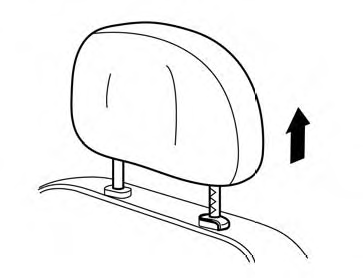
To raise the head restraint/headrest, pull it up.
Make sure the head restraint/headrest is positioned so the lock knob is engaged in the notch before riding in that designated seating position.
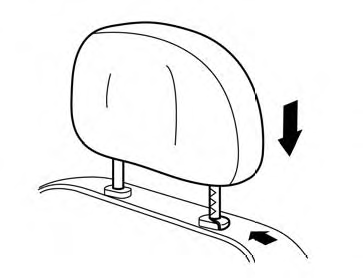
To lower, push and hold the lock knob and push the head restraint/headrest down.
Make sure the head restraint/headrest is positioned so the lock knob is engaged in the notch before riding in that designated seating position.

 Front seat head restraints/headrests
Front seat head restraints/headrests Seat belts
Seat belts